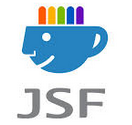Apache Shale is a Java Server Faces based Web Application Framework from the Apache software foundation. Shale is talked of as the “heir” Apache struts framework. also read: Introduction to JSF JSF Interview Questions Request Processing Lifecycle phases in JSF We all know that struts is the most used Java Web Framework so far. While …

